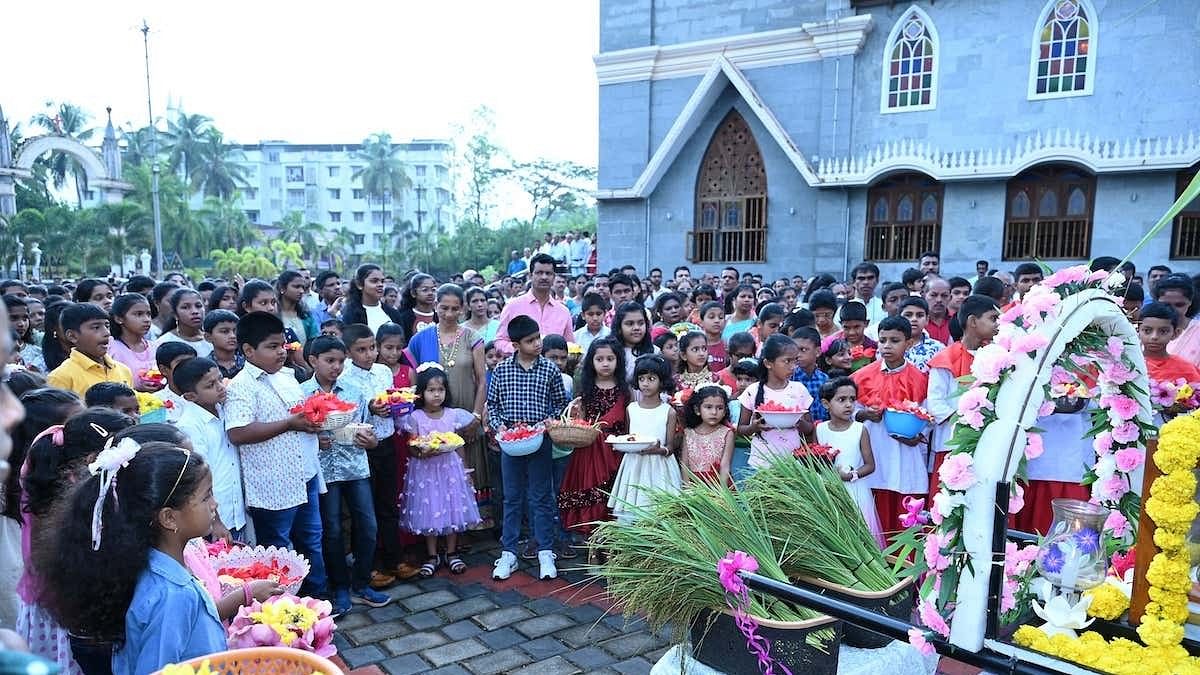
Credit: Special Arrangement
Kadiru Kattuvudu’ (also known as ‘Kadru Kattudu’, ‘Koral Kattunu’, ‘Koral Parba’ or ‘Tene Habba’) is a harvest festival celebrated in the Udupi and Dakshina Kannada districts. People of this region, irrespective of religion and caste, welcome a new harvest to their homes with celebration. The first crop gets a grand reception along with hostu or hosa akki oota (rice porridge made from the new grains). Though paddy cultivation is disappearing in the coastal belt on a larger scale, people continue to celebrate this festival without losing their zeal.
Generally, Kadiru Kattuvudu takes place during Navaratri as it is considered auspicious in the Hindu religion. The day prior to the festival is a very busy one for many households. They decorate the house in a traditional manner and clean the entire house with great care.
Drawing from the Kundapura Kannada Nighantu (Kundapura Kannada dictionary), scholar Muralidhara Upadhya explains that on the previous evening of Hosatu Habba, family members remove a few paddy saplings from the neighbouring paddy field and place it in their field with the support of sticks tied in the shape of a triangle. Upadhya is former head of the Kannada department at Poorna Prajna College in Udupi.
The next day, the head of the family will offer cucumber pieces to the crops, decorate it with flowers and offer arati and dhooparati to it. They then carry the kadiru or sapling in a new basket along with bamboo springs, urki plants, mango leaves and jackfruit leaves. Puja is offered before the kadiru with coconut, bananas and locally-grown vegetables like cucumber, Mangalore cucumber, harive soppu (Red amaranth) and alasande kodu (long beans or black-eyed beans).
After completing the rituals, the kadiru is tied along with bamboo, mango and jackfruit leaves using a rope made up of coconut leaf sheath to various parts of the house. Generally, it is tied to the tools used for agriculture.
Paddy scarcity
Almost every temple in this region celebrates this festival. When paddy fields started to disappear, people started to depend on these temples to give kadiru in the form of prasadam. Families would take this and tie it in their houses.
As more and more people started to depend on temples for kadiru, even temples began to face a shortage. Thus, some people began growing paddy exclusively for this festival in a small area of their garden. Some farmers have allowed others to take paddy crops from their fields to celebrate the festival.
The Mahalingeshwara Geleyara Balaga in Chantaru in Udupi has taken the initiative to grow paddy solely to cater to the need during Kadiru Kattuvudu. A group of friends have grown paddy on 40 cents of land. Aravinda, a member of the group, says, “We provide crops to nearby temples in Brahmavara, Kolluru, Kadiyali and Perduru. As we announce it on social media, around 500 to 1,000 people come and collect crops for the celebration from us.’’
Different communities
‘Kattuvudu’ or the process of tying also represents uniting and binding. In a true sense, this festival unites all communities of the coastal belt of Karnataka.
Konkani-speaking Catholic Christians in the coastal belt celebrate this festival on St Mary’s Feast on September 8 every year. Compared to the Hindu community, the rituals are little different among the Christians. Community members gather at church, and after offering prayers, they take kadiru along with sugarcane to their homes. They do not tie it around their homes, but keep it in their place of worship.
Then, they have a celebratory lunch with their extended family. Father Cyril Lobo, director of Divya Jyothi Institute, Kakkunje, Kalyanapura, Udupi district, says, “We mix new grains in odd numbers to the milk or mix it with other dishes we prepared and consume the new grains. It is like a family fest for us. We even send the new crop to our relatives in other cities and countries through post. So they can join us in the celebration of this festival. It makes our family bond even stronger.’’
He adds that as most parishioners belong to the farming community, they have not faced a scarcity of kadiru for their celebration. “They even share it with their friends from other communities,” he says.
Aboobakkar Karkala, a farmer who has conserved 800 varieties of paddy shares crops with people from the Hindu, Christian and Jain communities who celebrate the festival. “I even provided 70 varieties of paddy crops to the Udupi Krishna Mutt,” he says.
Aboobakkar recalls the celebration of Koral Parba in his grandparents’ house and says, “As farmers were very few in number in the Muslim community, we rarely saw this celebration among our community. But I remember my grandmother tying kadiru to our agricultural tools.”
Credit: Special Arrangement
Credit: Special Arrangement
Credit: Special Arrangement